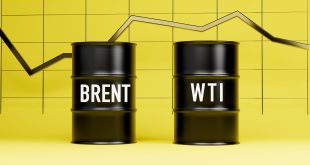US consumer confidence experienced a slight decline in August 2025, with the Conference Board’s Consumer Confidence Index dipping to 97.4 from a revised 98.7 in July, halting the recovery seen in the previous month. This modest drop aligns with expectations of subdued consumer sentiment, reflecting concerns about current economic conditions and future prospects. The report sheds light on market dynamics and their potential impact on the US dollar, which remains range-bound around the 98.20 level.
Details of the Consumer Confidence Report
The Conference Board’s monthly survey is a key indicator of American consumer behavior, capturing their expectations, purchasing intentions, and vacation plans. The report includes two primary components: the Present Situation Index, which measures consumers’ perceptions of current business and labor market conditions, and the Expectations Index, which gauges short-term outlooks for income, business, and employment. Consumer confidence was expected to ease to 96.4, following a rise to 97.2 in July from 95.2 in June. The actual reading of 97.4, while slightly above expectations, confirms a slowdown in sentiment. In July, the Present Situation Index fell to 131.5, while the Expectations Index rose to 74.4, indicating mixed signals about the economy’s trajectory.
Implications for the US Dollar
The US Dollar Index (DXY), which measures the dollar’s value against a basket of major currencies, has been under pressure following dovish remarks from Federal Reserve Chair Jerome Powell at the Jackson Hole Symposium. The DXY, hovering around 98.20, faces critical support at 97.50, with further levels at 95.13 (February 4) and 94.62 (January 14) if it breaks below its multi-year low of 96.37 (July 1). Conversely, a breakout above the August high of 100.25 could pave the way toward 100.54 (May 29) and the May peak of 101.97 (May 12). Softening momentum indicators, with the Relative Strength Index (RSI) dropping to around 46, signaling waning bullish momentum, and the Average Directional Index (ADX) at 13, indicating a lack of a strong directional trend. The slight decline in consumer confidence could further weigh on the dollar, as it reflects cautious consumer sentiment amid recent inflation and labor market data.
Broader Economic Context
The Conference Board’s report comes at a pivotal moment, as markets closely monitor consumer sentiment for clues about spending behavior, a key driver of the US economy. The anticipated mild decline in August’s index aligns with broader economic uncertainties, including inflationary pressures and labor market dynamics.
The report’s sub-indices provide deeper insights: the drop in the Present Situation Index in July suggests growing concerns about current economic conditions, while the uptick in the Expectations Index indicates cautious optimism about future prospects. These mixed signals could influence investor confidence and market expectations for Federal Reserve policy, particularly after Powell’s recent comments, which have already contributed to the DXY’s sell-off.
The slight dip in consumer confidence underscores ongoing challenges in sustaining economic optimism among American consumers. As the US dollar navigates critical technical levels, the Conference Board’s report serves as a crucial gauge of economic health, potentially influencing monetary policy and market sentiment. Will the dollar hold its ground, or will further softening in consumer confidence signal deeper economic concerns? The coming months will be critical in determining the trajectory of both consumer sentiment and the US dollar’s performance.
 Noor Trends News, Technical Analysis, Educational Tools and Recommendations
Noor Trends News, Technical Analysis, Educational Tools and Recommendations





